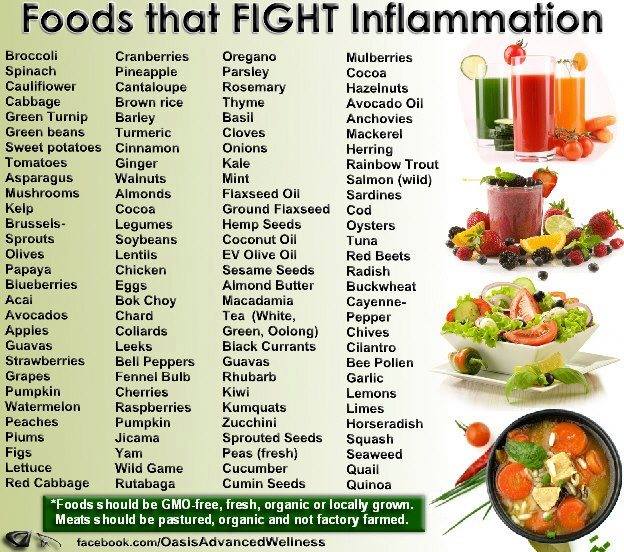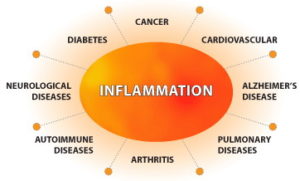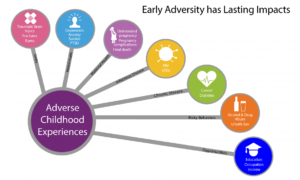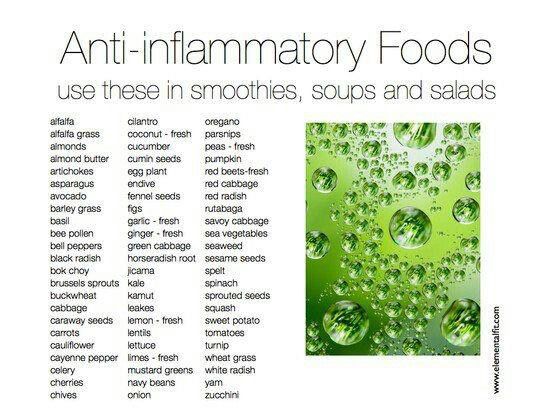How do you know if you need an anti-inflammatory diet? You have chronic pain for one. In the last blog, I mentioned symptoms or conditions that can result from too much inflammation. These include chronic pain, auto-immune diseases (Lupus, arthritis, Crohn’s, Colitis, MS and others), IBS, rosacea, skin rashes and recovering from injuries or surgery (especially joint replacement)!
I personally believe everyone should be on an anti-inflammatory diet.
But how do you start an Anti-Inflammatory diet?
When I started my journey with the anti-inflammatory diet, I started with my Detox Plan For Athletes.
It is a 2 week plan which is a great jumpstart into healthier eating habits and is real food based. But as the pain developed, I started do more anti-inflammatory foods to that plan. I started with eliminating the processed foods, then wheat – both of which are part of the Detox Plan for Athletes.
I was getting certified in Nutrition Response Testing which helped to identify things that were aggravating my hip. The first were sugar and wheat – that was a confirmation of why it is part of that detox plan.
Then brown rice – flour, rice, syrup and protein powder. Then petroleum/alcohol based products. Each month I did the Nutrition Response Testing session, I found something else that was aggravating my hip and making it hurt. I also optimized the supplements I was taking until eventually, the hip was not screaming at me. And I was with minimal pain.
Wow, could food really do that? Eliminate the pain? I was proving that was the case, and have for 100’s of my clients.
After each test, I would eliminate that aggravating food, I stop slathering my sore  with Aquaphor (petroleum and isoproplyl alcohol are the main ingredients that I tested poorly for!) I replaced the Aquaphor and lip balms with shea butter instead of petrolatum.
with Aquaphor (petroleum and isoproplyl alcohol are the main ingredients that I tested poorly for!) I replaced the Aquaphor and lip balms with shea butter instead of petrolatum.
I found added anti-inflammatory supplements that worked really well (Inflavanoid IC and OmegaGenics 1200 Concentrate by Metagenics) and used the Nutrition Response Testing to optimize the dosage. I was then able to give up the Advil and the potential damage to my liver from chronic NSAID use.
Part of the process is to eliminate the aggravating foods and finding replacement foods – I do help clients with that as no one wants to go home and wonder what can the eat? I had that with previous nutritionist I had seen and I vowed never to do that to my clients. So a ‘safe’ foods list is created for you and recipes provided, too!
Part of starting an anti-inflammatory diet is to start paying attention to the signals your body is giving you.
Pain is a signal that something is not right! A skin rash or itching is another sign. GI or brain fog distress is yet another. What is aggravating the condition is where I can help and make the process painless.
When I started, I eliminated the sugar and wheat first but not at the same time. I help you pick one which is easier or the one which has the bigger impact. Both are highly inflammatory. Every time I ate them, especially together, my hip would be cranky and achy for the next 24 hours. I eliminated those first for 2 weeks then increased it to 4 months. Then when I reintroduced it, I made the connection between my pain and the food I ate. It was like night and day sometimes! Once I made the connection between my symptom (hip pain) and the food (wheat and sugar), I was perfectly ok not to eat anything containing those ingredients.
is easier or the one which has the bigger impact. Both are highly inflammatory. Every time I ate them, especially together, my hip would be cranky and achy for the next 24 hours. I eliminated those first for 2 weeks then increased it to 4 months. Then when I reintroduced it, I made the connection between my pain and the food I ate. It was like night and day sometimes! Once I made the connection between my symptom (hip pain) and the food (wheat and sugar), I was perfectly ok not to eat anything containing those ingredients.
During the reintroduction phase, I would try some, and wait for 72 hours to see if the pain was there or not. If it were, I knew I had to continue avoiding it for another month. Then I would see if a smaller dose would be ok. I learned how much I could eat….but also only chose those things I loved like brownies or holiday poppy seed roll to eat.
I learned that if I ate more than 2 bites, I would be in pain. And I really did not want pain.
Last December, I had a piece of my friends homemade pumpkin cheesecake. She makes awesome cheesecake, so there was no way I was going to not have some! It was so good, I had a second sliver. OMG, I had to take 2 Advil before I went to bed, then woke up at 2 AM to take 2 more as the pain was so bad! It was the triple whammy – sugar, wheat and dairy. All inflammatory. But it tasted so good!! Was it worth it? Not sure – am still trying to decide.
I replaced sugar with honey in my coffee, used dates instead of sugar in baked goods and found some recipes using potatoes and almond flour instead of wheat. Some are on the recipes page so you can try them, too!
I know that emotional issues can cause pain.
Emotional pain rooted in feeling abandoned at differing times  of my life.
of my life.
I offer and performed my own emotional release therapy called The Path To Heal. These sessions clear that emotional pain stemming from a childhood memory where I perceived it as an insult and in this case a punishment. These emotional blocks were being stored in my hip.
I recall one training session for The Path To Heal where my hip ached. I could not sit still in class. In one of the sessions, something shifted and I went for a walk outside with no pain, no discomfort and felt like I was moving gracefully too! I skipped down the street!
If I woke up with pain, I immediately did a session if I had not strayed from my anti-inflammatory eating plan.
It was pretty remarkable to do both the emotional work with the anti-inflammatory plan – double bonus healing!
How do I start an Anti-Inflammatory diet with my clients? Complete the initial paperwork for a nutrition coaching session which includes 4 pages of food diary logs. They usually sign up for the 4 session package.
I need to see what clients are eating and when the pain is worst to be able to assess what the first step is.
I utilize this anti-inflammatory chart as a reference, not a be-all-end-all chart.
We work together to determine what we need to do first.
You decide if is easier to eliminate sugar than wheat to start. So that is where you start.
Then when you come for your follow up, we test again and chart your progress.
We go through the main foods – wheat, sugar, grains, hydrogenated fats (Only in processed foods) and usually after those few, the pain has subsided. We eliminate and replace one thing at a time so it is less traumatic.
Next we start to introduce more of the anti-inflammatory foods like green vegetables,  cabbage, kale, parsley, turmeric root, pineapple, rosemary and Omega-3 fatty acids. We add cold water fish like sardines, salmon, mackerel and herring or choose a supplement if you cannot eat those fish.
cabbage, kale, parsley, turmeric root, pineapple, rosemary and Omega-3 fatty acids. We add cold water fish like sardines, salmon, mackerel and herring or choose a supplement if you cannot eat those fish.
I always add the Jshake anti-inflammatory Elixir drink (preferably in the juice extractor). This I called the Hyper-Anti-Inflammatory elixir! It really works and I still drink it 4-5 times per week 5 years later! If you do nothing else but this, do drink 12 oz every day!
For me, it was a process that was 2-8 months. Depending on where you are, it may take you longer. It takes time. I have also had clients pain and symptom free within 2 months with my assistance.
Starting on an anti-inflammatory diet is one step at a time, and is a bit different for each person. How you start on an anti-inflammatory diet is much easier when you have my help. The only things you really have to do is start! Bye bye pain and inflammation! Hello happy active life.
Start by including more of the “good foods” on the chart above, and less of the ‘avoid foods’. Then when you are not sure what the next step is, contact me and we can speed up the process. To your health!
Joanna K Chodorowska, BA, NC, TPTH is an intuitive sports nutrition coach helping you connect the dots between the foods you eat, and the symptoms you have.
While suffering thru a debilitating degenerative hip condition and hip replacement surgery, she perfected the anti-inflammatory diet and really understood the role emotional traumas play in painful conditions.
She understands how hard it can be and can make it easier for you to start an anti-inflammatory diet tailored to you!
To contact her, please visit here
Hi Joanna, thanks for sharing this post, it’s very well written. Eliminating certain foods from my diet has helped tremendously with controlling my inflammation and flare ups. I just finished reading this article over at https://www.totalbeings.com/organic-total-body-reboot-review-heres-what-i-really-think/ and would love to get your thoughts on a detox cleanse when dealing with inflammation. Thanks heaps again for the tips, I’m sitting on the fence if I should sign up or not…Cheers!
I believe in a hands on approach with most of my clients as to what it is they need. Inflammation is not just for losing weight. Yes, many of my clients have weight issues as well and doing an elimination protocol based on what they are eating seems to work best.
I have a Detox Plan for Athletes that sounds similar to the program link you sent. It has 79 recipes in it to include as options and substitutions for the other meals so it is not just following the meal plan options only.
This topic can be rather complex, so I usually suggest working on a more specific plan for each person so we can identify what IS the best protocol for that person to follow.
I have had clients lost 16 pounds during the Detox Plan for Athletes plan, and continue to lose as they maintained a mostly clean diet.
My specialty is inflammation – so I love working with each individual to customize what it is they need, and transform their lives so they can have fun again.
Let me know if you want to chat about your situation by using htt[s://calendly.com/joanna-nim/15mins – then we can determine what would be best for you. All the best! hugs xo joanna
I had no clue that skin rashes or pain was a sign that you should start taking an anti-inflammatory diet of your own. I’ve been having those symptoms recently and I was wondering what was causing them since they really hamper me from enjoying my day. If getting an inflammatory meal service like you said can help me out and at the same time prevent me from getting all those scary diseases you mentioned, then I’ll have to make sure to start my own anti-inflammatory diet.
Skin conditions are typically inflammation in the gut, and imbalances in the microbiome which may be causing sensitivities to food and overloading the liver. An anti-inflammatory diet will always help most conditions.
If you need help on how to do this, please contact me directly and we can optimize a program for you so it is easier than trying to do it alone.
Once we implement the anti-inflammatory plan, you should see results fairly quickly. And to really finalize it, i would suggest a stool analysis, too so we can balance the microbiome based on the results. I have been using that with so many of my clients recently and it has been an even greater transformation when we combine them together!
Let me know! or fill out the contact form and we can schedule some time to chat and see what we can do to help you!